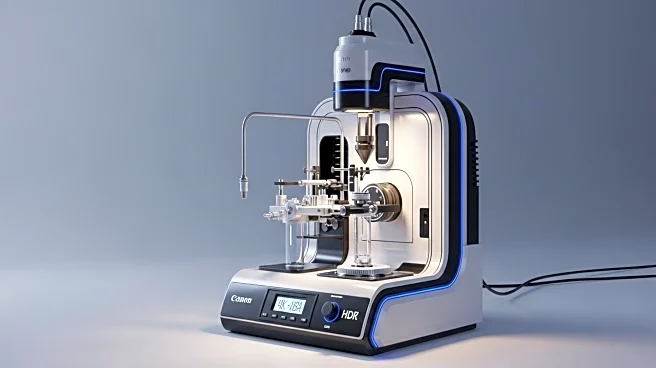What is the story about?
What's Happening?
Beckman Coulter Diagnostics has introduced the industry's first fully automated Brain-derived Tau (BD-Tau) research use only immunoassay test. This test is designed for use on the DxI 9000 Immunoassay Analyzer and Access 2 Analyzer, enhancing precision medicine research for neurodegenerative diseases. BD-Tau, a promising blood-based biomarker, offers improved specificity by detecting brain-derived tau directly in the blood, minimizing confounding factors from peripheral sources. This development is expected to revolutionize disease diagnosis, enable timely therapeutic interventions, and provide more accurate assessments of disease progression and treatment efficacy. The test is part of Beckman Coulter's expanding portfolio of neurodegenerative disease assays, which includes p-Tau217, NfL, GFAP, and APOE ε4.
Why It's Important?
The launch of the BD-Tau test is significant for advancing neurodegenerative clinical research, particularly in Alzheimer's disease (AD). Plasma BD-Tau levels have been shown to correlate with Aβ pathology throughout the AD spectrum, suggesting its potential as a biomarker for early-stage AD research. Elevated BD-Tau levels in plasma can predict future brain atrophy and cognitive decline, linking it to both current disease burden and progression. This test could lead to more refined research stratification for studying disease risk and exploring personalized interventions. The automated nature of the assay also offers substantial workflow advantages, enhancing research efficiency and consistency across clinical trials.
What's Next?
Beckman Coulter Diagnostics is developing an Aβ-42 RUO immunoassay test for use on the DxI 9000 and Access 2 analyzers. This test is recognized as a key biomarker in AD diagnostics, playing a crucial role in early detection and understanding disease progression. The availability of this assay is a significant step forward in preparation for Beckman Coulter's IVD submission of its p-Tau 217/Aβ-42 ratio test to the U.S. Food and Drug Administration.
AI Generated Content
Do you find this article useful?















